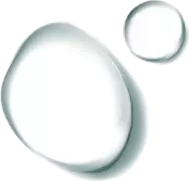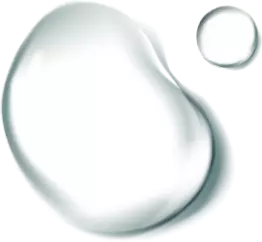


New EPA requirements to identify sources of lead
The U.S. Environmental Protection Agency (EPA) has a new requirement for all public water utilities to develop and publish an inventory of known and suspected lead water lines within their service area. Toho expanded its Lead and Copper Program to meet this requirement.
Lead or copper found in tap water is typically caused by underground pipes, plumbing, solder, and fixtures in older buildings. The federal government banned lead pipes in the late 1980s. Properties built after 1988 are unlikely to have lead. The illustration below explains the location and ownership of service lines and potential sources of lead.




The illustration shows that the pipe that runs from the water main in the street to the building is called a service line. As water runs through lead service lines or fixtures the lead can dissolve or break off into tiny particles that may end up in tap water. Toho is responsible for the service line up to and including the water meter. The property owner is responsible for the service line from the water meter to their building. Maintaining the service line is typically a shared responsibility.
Health effects
Exposure to lead in drinking water can cause serious health effects in all age groups. Infants and children can have decreases in IQ and attention span. Lead exposure can lead to new learning and behavior problems or worsen existing learning and behavior problems. The children of women who are exposed to lead before or during pregnancy can have increased risk of these negative health effects. Adults can have increased risks of heart disease, high blood pressure, and kidney, or nervous system problems.
Inventory and inspections
Toho completed an inventory of service line materials in our service area in 2024 using historical data from before 1989, physical inspections at more than 400 randomly selected addresses of properties built before 1989, and extensive statistical analysis. Based on this proven statistical model for the inspection process, Toho did not identify lead service lines within our service area.
Customers may look up their property address on the interactive map below to see how their water service line is categorized.
The categories of service line materials are:
- Non-Lead (Verified) – the service line was physically inspected
- Non-Lead (Record) – the house/building was built after the lead ban
- Non-Lead (Statistical) – a statistical analysis determined there is less than 1 percent chance the service line is lead



Learn more about the inspection process
Expand AllToho will continue to complete physical inspections throughout the next few years using the process described below.
- Toho will update its inventory annually and report any lead service lines encountered. A Toho contractor will inspect service lines identified as Non-Lead (Statistical). The technician will open the meter box to view the service line and may need to dig inside or next to the box to inspect it.
- Disturbed areas will be restored to their previous condition.
- Technicians will leave a door hanger notifying customers that the inspection was completed.
- If the inspection reveals a lead service line, Toho will notify the customer, offer a filter pitcher and provide instructions on ways to reduce lead.
- Please note: Having a service line containing lead does not necessarily mean there is lead in your water; however, there is the potential for lead to be released as water moves through the pipe.
Replacement plan
Since we have not identified any lead service lines, Toho has not developed a replacement plan. However, if you suspect that there is lead solder or there are fixtures that contain lead in your home’s internal plumbing, follow the tips below to reduce your lead exposure risk.




The graphic shows how to reduce lead if you suspect or have pipes made of lead or fixtures with lead/copper.
Common Questions
Expand AllThe pipe that runs from the water main in the street to the building is called a service line. A lead service line is any pipe greater than 24" in length where any part of that pipe is made of lead.
No. Toho has not identified any lead service lines in the system. Previous testing has consistently shown water samples meet EPA’s water quality standards.
Toho looked at the age of the buildings/homes, material records, zoning, building codes, location and timeframe of the water infrastructure installation, and geographic information to determine the potential for a lead service line on private properties throughout the service area.
Toho randomly selected properties built before the 1989 lead ban to provide a representative sample of the entire service area. No lead service lines were found at these properties.
Even though the initial inventory is complete, Toho is continuing to inspect service lines identified as Non-Lead (Statistical). A Non-Lead (Statistical) service line is one that has not yet been visually inspected but has less than a 1% likelihood of containing lead.
Please fill out this request form to determine if your property meets specific criteria for further inspection. Requests will be prioritized based on property criteria.
As Toho updates its annual inventory, if a service line is found that requires replacement, Toho will notify affected customers and replace the Toho-owned service line. The property owner will be notified where the service line is on the customer's property, and the owner will be provided with replacement options including financial assistance resources.
Having a service line containing lead does not necessarily mean there is lead in your water; however, there is the potential for lead to be released as water moves through the pipe. Toho will also provide you with a water pitcher and water filter along with information on how to reduce exposure to lead.
Having a lead service line does not necessarily mean there is lead in your water, however there is the potential for lead to be released into water as it moves through a lead service line. If your property is identified as having a lead service line, Toho will notify you and provide you with a water pitcher and filter along with information on how to reduce lead. Or if you suspect you have pipes in your internal plumbing made of lead or fixtures with lead/copper, there are some steps you can take to reduce lead.
Recommendations to reduce lead include:
- Clean out faucet aerators.
- Use NSF/ANSI-certified water filters for drinking, cooking, baby formula or consumption.
- Run cold water from a faucet for three to five minutes before consuming if water has not been used for several hours. Boiling water does not remove lead.
- Inspect and replace inside plumbing and fixtures if installed prior to 1989. Consult with a licensed plumber.
Source: EPA Steps For Reducing Lead
Water will be tested in schools and daycares starting in 2025. Toho will be reaching out to the schools and local daycares to coordinate testing.
Questions
This page will be updated as new information becomes available. If you have any questions, please call us at 407-944-5000 or email lcp@tohowater.com.
